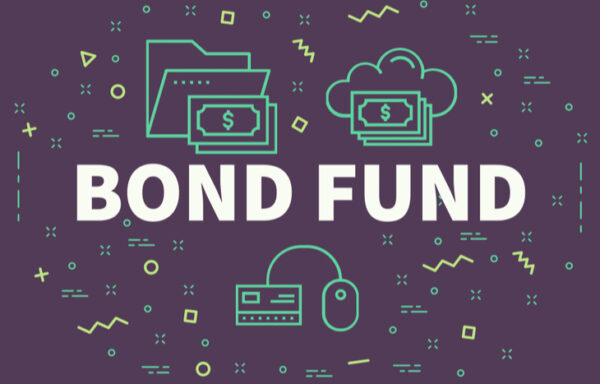Buying Bonds: A Step-by-Step Guide
You’ve heard you should invest in stocks and bonds for long-term appreciation. What exactly is involved in buying bonds, and how should you go about it? Which bonds make the most sense for your portfolio? Here’s a basic primer on what you should know before buying bonds.

What is a Bond?
Think of a bond as an IOU. It’s a debt security issued by borrowers to raise funds from investors for a specific period of time. When buying bonds, you are lending money to the issuer. That issuer, whether a corporate or government entity, pays a predetermined amount of interest during the bonds’ life. Upon the bond’s maturity, the buyer receives the principal. With bonds, that principal is known as face or par value.
Types of Bonds
All sorts of entities issue bonds. Here are some of the most common bond types:
- Agency bonds: Issued by federal agencies, such as Fannie Mae or Ginnie Mae. While low risk, these bonds are not issued directly by the U.S. government. For that reason, yields are higher than with bonds that are directly issued by the federal government. They are also taxable.
- Corporate bonds: These bonds are issued by private and public corporations. They fall into investment and non-investment grade categories. While interest rates vary according to the bond, they are determined at origination. These bonds are taxable.
- Municipal bonds: These bonds are issued by government entities. States, counties, municipalities and local authorities issue such bonds to make capital improvements. Munis are available in taxable and tax-exempt forms. While tax-exempt municipal bonds are free from federal taxes, some bonds are also exempt from state and local taxes.
- Treasury bonds: Issued by the U.S. government, these bonds have the backing of the full faith and credit of the U.S. There are different types of treasury bonds, based on the length of maturity. Treasury bonds per se usually mature in 30 years, paying interest every six months. Interest on Treasury bonds are exempt from state and local, but not federal, taxation.
- Zero-coupon bonds: These bonds do not pay interest during their lifetime. Such bonds have long maturities, usually up to 10 or 15 years or more. They are purchased at deep discounts from face value. When the zero-coupon bond matures, the investor receives the bond’s face value.
Keep reading for more info on buying bonds.
Short, Intermediate or Long-Term Bonds
Bond maturities fall into the short, intermediate or long-term. Short-term bonds mature in less than five years, while intermediate-term bonds mature between five and ten years. Long-term bonds mature in more than 10 years.
Short-term bonds have lower risk, but also lower yields. As expected, intermediate-term bonds fall in between short-and-long bonds for risk and yield. Long-term bonds have the advantage of the greatest yields, but also the highest risk.
What You Need to Know About Buying Bonds
The Financial Industry Regulatory Authority, or FINRA, provides tips regarding what investors should know before buying bonds. These tips include:
- Avoid reaching for yield: higher yield entails higher risk.
- Know your risk profile: like stocks, various bonds, and bond funds carry different risk levels.
- Understand associated costs: these may include commissions and markups.
- Reinvest coupons: when buying individual bonds, reinvest your coupons to take advantage of compounding. This does not apply to bond funds, as the fund does so automatically.
Bond Ratings
Bond ratings range from AAA to D. The rating indicates the credit quality of the bond. Independent entities such as Moody’s or Standard & Poor’s rate the issuer’s creditworthiness. Those bonds rated BBB by S&P or Baa by Moody’s and above are considered investment-grade.
Bonds below that rating are often referred to as “junk” bonds. These bonds offer a higher yield than investment-grade bonds, but the risk of default is much greater. They are marketed as high-yield bonds.
Where to Buy Bonds
Purchase bond shares through a mutual fund or ETF, or buy individual bonds. If going the latter route, always choose a broker specializing in bonds. Individual bonds generally range in unit value from $1,000 to $100,000.
For many investors, the diversity achievable via a mutual fund or ETF makes more sense than trying to assemble a diversified bond portfolio on their own.
You can purchase Treasury Bonds directly from the U.S. Treasury or from a broker, bank, or dealer.
Pros of Buying Bonds
Bonds serve a critical role in a diversified portfolio. They do not move in tandem with stocks, thus creating diversification. Investors receive a steady income stream from most bonds with rates that are generally higher than money-market funds and accounts. The exceptions are Treasury bonds and zero-coupon bonds. With these bonds, interest income is deducted from the purchase price. At maturity, investors receive the bond’s full face value.
Cons of Buying Bonds
When interest rates rise, that triggers the market value fall of outstanding bonds. On the other hand, when interest rates fall, the market value of outstanding bonds rises. There is also an inflation risk. When inflation is rampant, the bond’s total return may not outpace it.
There is also a call risk. That means the issuer retires the bond prior to maturity. The trigger is generally declining interest rates. The bondholder receives payment on the bond, but must reinvest at lower interest rates.
It is possible for bonds to default. When default occurs, the issuer cannot pay the interest or the principal.
Considerations When Buying Bonds
When saving for retirement or other long-term goals, you’ll need stocks and bonds in your portfolio. The ratio between the two depends on how many years you have until exiting the workforce. Bonds provide income and stability, but stocks have the necessary long-term growth potential.
As with any investment, before buying bonds, perform your due diligence.





